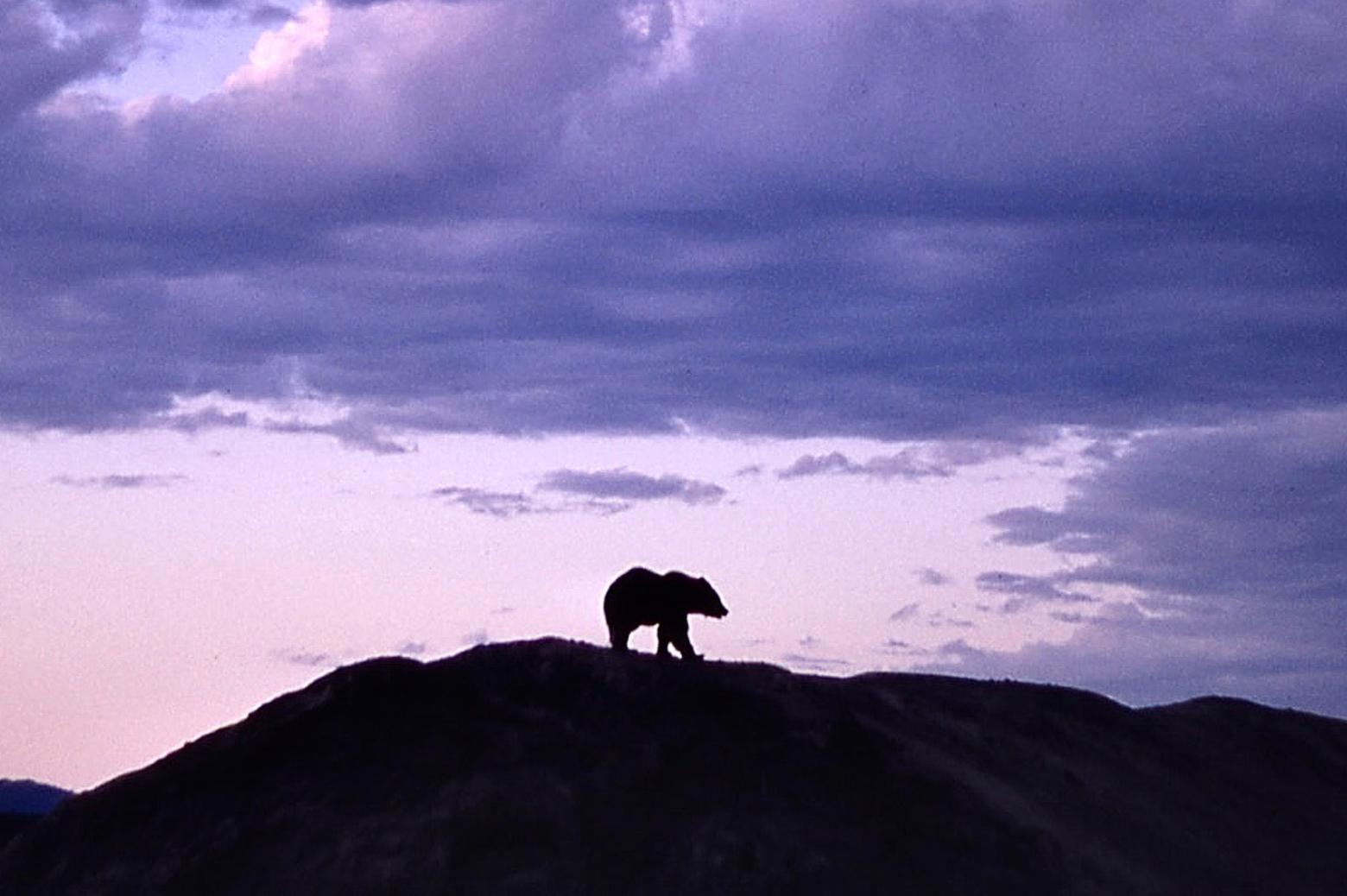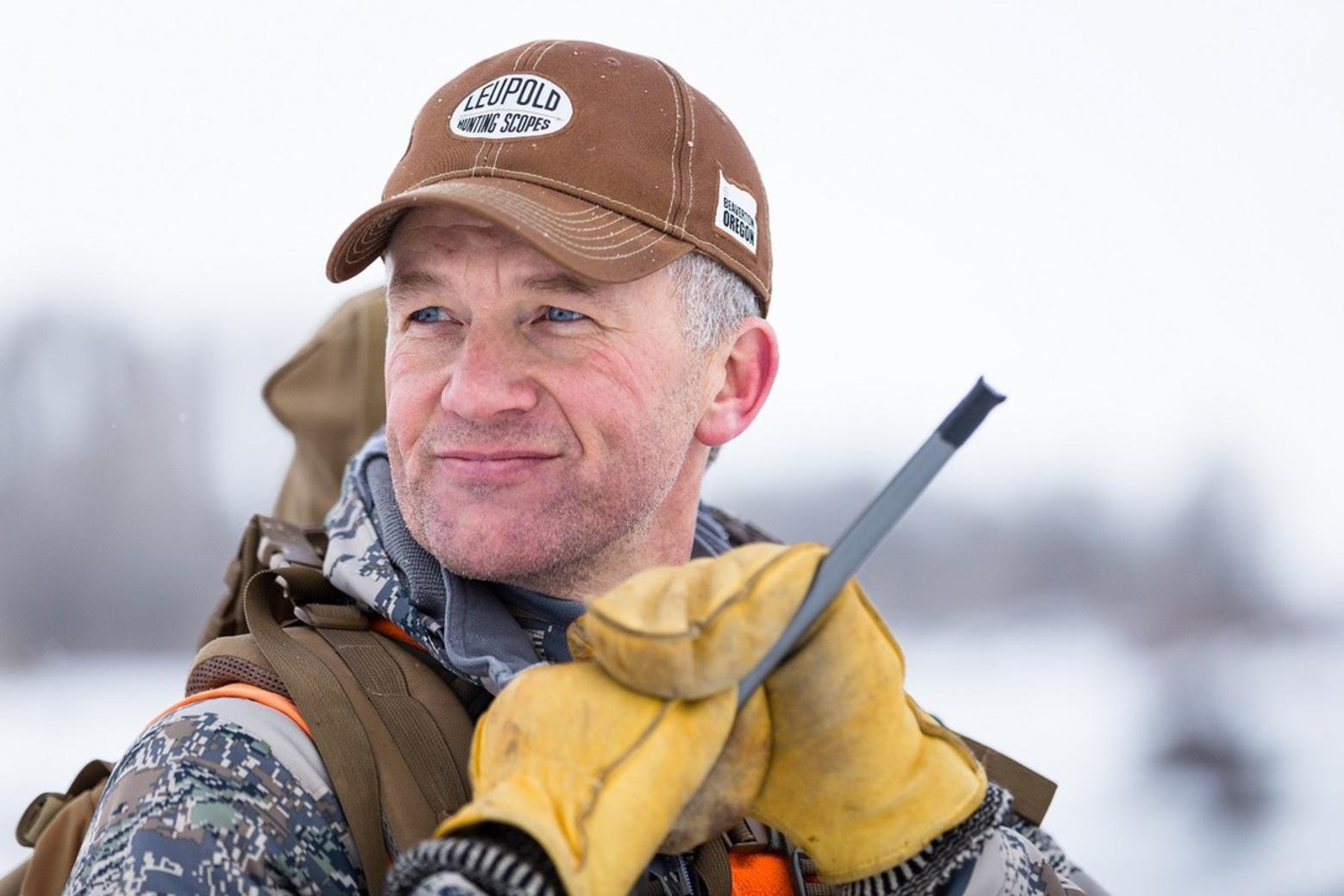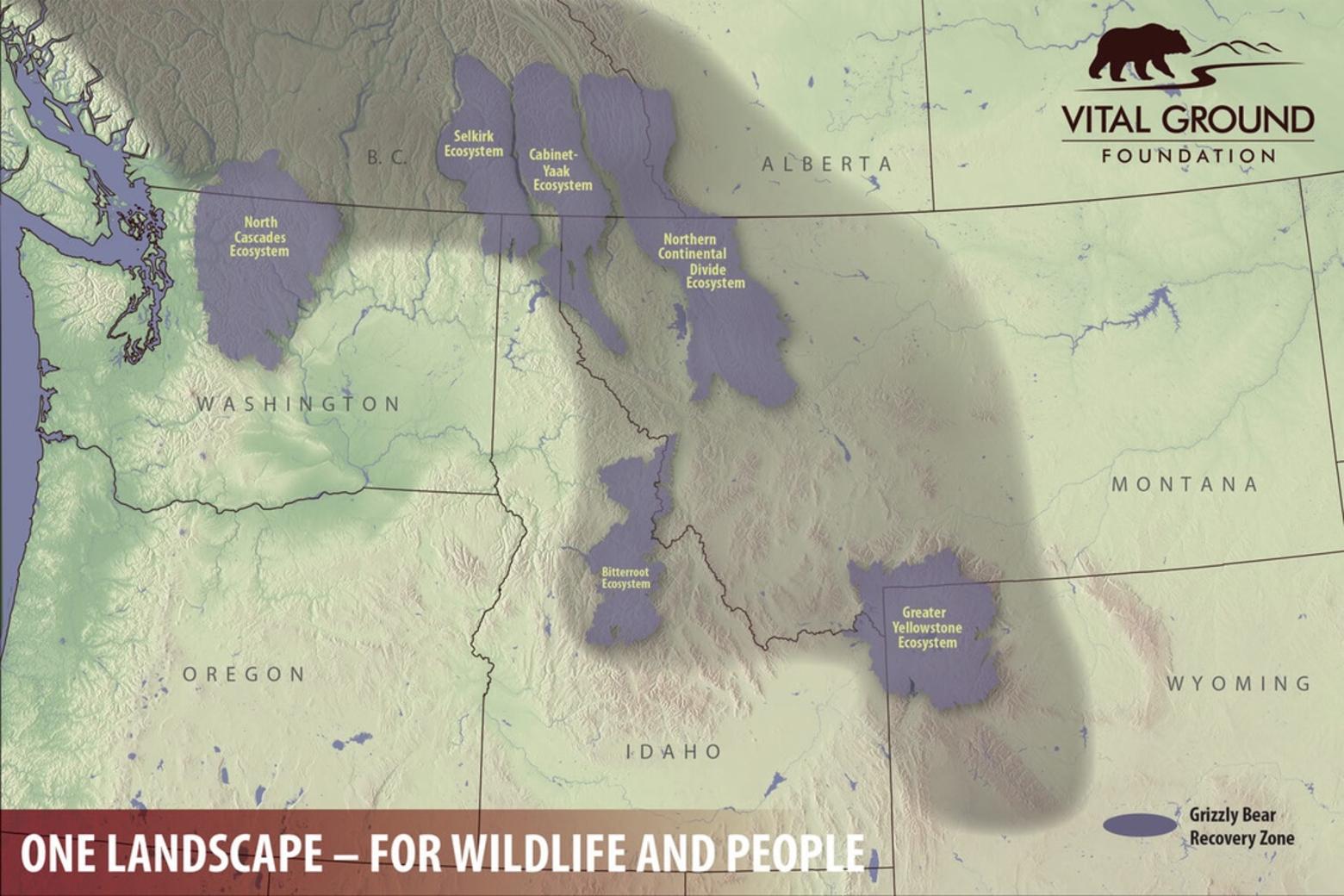Back to StoriesMaintaining Forward Progress With The Great Bear
September 15, 2020
Maintaining Forward Progress With The Great BearRandy Newberg is host of some of the most popular hunting shows on social media in America. He reflects on stalking wapiti in grizzly country and Montana's strategy for guiding bruin conservation
by Jessianne Castle
Randy Newberg doesn’t carry a sidearm. Clocking some 100 days every year exploring the unbound—and often bear-laden—pockets of the American landscape, Newberg says when it comes to a bear attack, he’d leave his trust in an aerosol rather than a piece of lead.
“I’m really proud that Montana is one of the places that grizzly bears have always been. It’s an example of the conservation ethic in Montana,” he says.
It’s a personal decision, one that
is the right of each individual who steps foot in the woods, but for Newberg,
carrying bear spray is a no-brainer.
Newberg is a hunter who calls
Bozeman, Montana, his home. He is the producer of two popular TV shows, “Fresh
Tracks” and “On Your Own Adventures,” as well as the Hunt Talk Podcast, where
he advocates for sportsmen and public land access.
The first time Newberg encountered
a grizzly bear at close range, he says drawing a sidearm, aiming, and then placing
an accurate shot would have been near impossible. He was on an archery elk hunt
in Southwest Montana, full of anticipation after spotting a herd of cow elk. As
he crested a small hill, he came head-on upon a boar grizzly, maybe 12 yards
away.
Fortune looked kindly upon
Newberg—the boar turned and hoofed it after realizing Newberg was there. “He
covered ground so fast,” Newberg says. “If he would have decided to come toward
me, he would have been on top of me so quickly. I wouldn’t have been able to
arm myself. I now have no false ideas that I’m going to do some John Wayne or
Clint Eastwood thing on a charging grizzly bear.”
Carrying bear spray is one of a
handful of behaviors that have become customary for Newberg as he ventures into
areas that are home to grizzly bears. Newberg chooses to take these precautions
out of a sense of self-responsibility for the conservation of grizzly bears and
he hopes other people who find themselves in bear country will consider taking
proactive steps as well.
Our behaviors and choices all play
in to the larger picture that is the future of grizzly bears in Montana. And a
future that is bright for both grizzly bears and people depends on the actions
of local communities, businesses, nonprofits and individuals.
The essential role of stakeholders
is emphasized in the work of the Montana Governor’s Grizzly Bear Advisory
Council and its newly released recommendations for how wildlife officials
should manage bears. These recommendations, released on Sept. 8, will provide a
starting point for Montana Fish, Wildlife and Parks as the agency drafts a new
statewide grizzly bear management plan that will address grizzly bears as an
endangered species and their management after delisting.
Choices
Newberg, 55, has called Bozeman
his home for almost 30 years. It’s a burgeoning place today, but one nestled in
a microcosm of the Rocky Mountains, an area ripe with elk country lore. But the
heavy timber and robust forage of good elk habitat is excellent grizzly bear
habitat too.
The first night Newberg spent
camped out in thick griz country, every sound was amplified. Snapping sticks
from a winter-ready squirrel or the rustling of leaves on a cool breeze
triggered an immediate worry: What was that? Was that a bear?
“I want to hunt elk, so I had to
figure out how to get over fears about grizzly bears,” he says. “For me that
meant learning all about grizzlies so I can avoid conflicts. The more you know
about bears, the easier it is to avoid them.”
“I want to hunt elk, so I had to figure out how to get over fears about grizzly bears. For me that meant learning all about grizzlies so I can avoid conflicts. The more you know about bears, the easier it is to avoid them.” —Randy Newberg
Hunting poses an interesting
complication in bear habitat: in order to successfully pursue game, hunters
travel quietly, often at daylight or dark. This is contrary to the typical
bear-safe recommendations: hike in groups of three or more; avoid hiking at
dawn, dusk or at night; make noise; stay on maintained trails.
Newberg shared his thoughts about
how to safely hunt in grizzly bear habitat during a July episode of The Elk
Talk Podcast with Corey Jacobsen. Among other points, Newberg told Jacobsen that
by knowing bear behavior you can better predict where bruins might or might not
be.
For example, in the steep,
furrowed mountains of the Madison Range, during Montana’s September archery
season, grizzly bears are likely at high elevations eating army cutworm moths
that feed on the nectar of alpine wildflowers by night and rest under rocks and
boulders by day. Also, grizzlies could be congregated on north-facing, brushy
slopes still abounding with huckleberries. Knowing these two things, a hunter
could reduce his or her likelihood of stumbling upon a bear by avoiding the high-density
areas: high, rocky elevations and brushy north slopes.
He added that if the spot you plan
to elk hunt is especially bear-dense, it could be worth it to hunt earlier in
the season—such as during September archery or the beginning of rifle season in
October—when bears are still looking for moths and berries, as opposed to later
in the season when they’ve started scavenging on hunter-killed carcasses and
are getting ready to den in late October or November.
Another scenario unique to hunters
that is also a high-risk setting for bear encounters is during animal processing.
“Getting an elk down on the ground in grizzly bear country is the hunter’s definition
of mixed emotions,” Newberg told Jacobsen. There’s a great sense of excitement
and accomplishment, as well as the realization that you now have to process the
animal, spending time focused on gutting and preparing what has already become
a bear attractant.
Newberg prefers to hunt with another person that way one can gut, carve and cut, while the other keeps an eye out for bears. They’ll haul the meat a couple hundred yards from the carcass for processing, and if they have to make trips in order to pack it all out, they always hang the meat away from the carcass in a place they can clearly see as they approach on the return trip.
“There are lots of things you can do to lower your risk, but there is still always the risk,” Newberg told Jacobsen. “Even if you do all of the right things you could still have an encounter or just bad luck.”
But for Newberg the risk that comes with having grizzly bears is a part of what makes Montana the special place that it is. “When you use the natural world as your grocery store, you grow to appreciate all the animals,” he tells me over the phone. It’s a couple weeks after Newberg and Jacobsen recorded their podcast, and just a month before the Treasure State’s opening day of archery.
“I’m really proud that Montana is one of the places that grizzly bears have always been. It’s an example of the conservation ethic in Montana,” he says.
Changes
In 1975, with some 800 to1,000
grizzlies remaining in the Lower 48—down from an estimated population of
50,000-100,000 prior to the 19th century—the U.S. Fish and Wildlife
Service (USFWS) listed grizzlies as threatened under the newly-created Endangered
Species Act..
The decades of robust conservation
efforts that followed affirmed the public’s commitment to preserving grizzly
bears. Albeit a slow journey, the distinct grizzly populations near Glacier and
Yellowstone National Parks—known as the Northern Continental Divide Ecosystem
(NCDE) and Greater Yellowstone Ecosystem (GYE)—steadily grew in health and
number and by the year 2000, the public heard rumblings of delisting.
The Fish and Wildlife Service—the federal agency
responsible for the oversight of listed species—sought delisting of the
distinct GYE population in 2007 and 2017, however several groups sued the
agency and federal courts overturned the delisting rules over fears of
prematurity. Litigation has continued in offices and courtrooms, meanwhile on
the ground in Montana, Wyoming and Idaho, communities and wildlife managers are
wrestling with the challenges that come with more people and more bears in some
areas and dwindling bear populations in others.
Currently grizzly bears are
managed in the Lower 48 with an interagency, multi-state approach that includes
oversight from the Fish and Wildlife Service and field support from the state wildlife departments, US Forest Service and US. Geological Survey, which oversees the Yellowstone Interagency Grizzly Bear Study Team.
The silvertip was listed on the
Endangered Species List under six distinct populations—six areas bears were
known to still exist in 1975. These are the Greater Yellowstone, Northern
Continental Divide, Bitterroot, Cabinet-Yaak, Selkirk and North Cascades
ecosystems. Today, USFWS reports there are an estimated 700 bears in Greater Yellowstone, 1,000
in the Northern Continental Divide, maybe 50 to 60 in the Cabinet-Yaak, and 70 to 80 in the Selkirk. There is not yet a resident population of grizzlies in Montana and Idaho’s Bitterroot Ecosystem or
Washington’s North Cascades.
In 2000, then governors Jim Geringer
of Wyoming, Marc Racicot of Montana and Dirk Kempthorne of Idaho convened the
Governors’ Roundtable on the Yellowstone Grizzly Bear Conservation Strategy.
This roundtable comprised of 15 citizens, five each from Montana, Idaho and
Wyoming, who were charged with thoroughly reviewing an interagency draft of
what is known as a “Conservation Strategy.” This document guides conservation
and management actions upon delisting for bears in and around the Greater
Yellowstone.
At the time, former Director of Fish Wildlife and Parks Patrick Graham said, "Bears do not recognize political boundaries. That’s
why Idaho, Montana, Wyoming and the federal land management agencies must work
together."
Newberg was among those 15
individuals who were appointed to develop the plan. “I look at the amount of
changes, how much change of their daily lives Montanans agreed to,” he says,
describing a cease in timber sales, grazing allotments and motorized use in
core grizzly habitat. “This happened because people said they would be willing
to make changes. That was a generation ago. It was a huge part of what allowed
grizzly bears to recover as they have today. The amount of sacrifice that the
citizens of Montana, Idaho and Wyoming have made should not be forgotten.”
Commitments
“Grizzly bears are valued by
people and cultures across Montana and around the world,” Montana Gov. Steve
Bullock wrote last year. “Grizzly bears are also feared and can affect people’s
livelihoods and safety. … Grizzly bear numbers in Montana continue to increase,
and have expanded into areas where they have not been for decades, including
places key to connecting their populations. … Existing management plans did not
fully anticipate grizzly bear distribution across the landscape and as
Montana’s human population continues to grow, we can expect conflicts between
bears and people to increase in frequency and complexity.”
These words begin an Executive
Order calling together a citizen panel that was tasked with creating a vision
for grizzly bears across the entire state. In July 2019, Bullock appointed 18
members from more than 150 applicants to sit on the Governor’s Grizzly Bear
Advisory Council, which met monthly between October 2019 and September 2020 in
order to discuss current conservation measures and community challenges then
draft a series of recommendations that will guide Fish Wildlife and Parks as they look to
develop a statewide bear plan.
On Sept. 8, the council released
recommendations that provide guidance on how the council would like to see FWP interact with bears. Specifically, these recommendations consider topics
like public education, conflict prevention and response, bear distribution, and
funding. They include the council’s thoughts on a possible grizzly hunt if they
are delisted, and recommend funding priorities. Look for a story soon in Mountain Journal on what the council recommended.
Montana Fish Wildlife and Parks Director Martha Williams says
this statewide approach is an important step in continued grizzly bear
conservation—at a time when bears are beginning to expand into areas outside
the original recovery areas—as the conservation strategies deliberately leave
for each state the discretion to prioritize and enact goals for attaining
healthy and sustainable populations of grizzlies, provide for human safety, and
minimize impacts to people’s livelihoods.
“As bears move to new areas, they
also move into areas that contain more private lands or communities,” Williams
says. “Regardless of whether the grizzly bear is listed and covered by the Endangered
Species Act or not, we all have a responsibility to understand what is needed
to help people and bears, and take actions to help both. We at MT FWP recognize
that a robust public engagement process helps inform a thoughtful approach to
grizzly bear management. It does not replace science, as science informs and
serves as a critical foundation to our actions. Yet, much of grizzly bear recovery
centers on conflict prevention, conflict reduction, and information, education
and outreach. Those require working with people and communities.”
“Regardless of whether the grizzly bear is listed and covered by the Endangered Species Act or not, we all have a responsibility to understand what is needed to help people and bears, and take actions to help both. Much of grizzly bear recovery centers on conflict prevention, conflict reduction, and information, education and outreach. Those require working with people and communities.” —Martha Williams, director of Montana Fish Wildlife and Parks
Throughout the council process,
members have worked hard trying to explain their personal values and experiences
while also hearing and understanding the values and experiences of other
council members. Their process was guided by Heather Stokes and Shawn Johnson,
social scientists from Missoula’s University of Montana. Unique from many other
working groups, this council chose to not only lead their own discussions, but
also appoint a member-derived writing team that drafted their recommendations,
as opposed to relying on agency staff.
“I am immensely grateful for the
difficult, inclusive and intentional conversations the Grizzly Bear
Advisory Council took on,” Williams says. “They poured their hearts and souls
into their work. They clearly cared and they put the time and effort in to
develop big-picture guidance and actionable recommendations for the Governor,
Montana and ultimately MT FWP.
“How lovely is it to see a group
of committed individuals with widely disparate views come to respect each other
and not only respect where each is coming from, but take on the hard and
uncomfortable work of trying to figure out how to move forward, where to go,
how to guide Montana in this important work?,” she adds. “I’d argue Montanan’s
have done this time and time again, and how grateful we can all be for those
individuals willing to roll up their sleeves and take on a task that can be
thankless. Yet, it’s how we do our best work and work that is needed.”
Newberg recalls the challenges of
working together to find solutions—there were controversial issues the
Governors’ Roundtable had to work out 20 years ago. But he says it took
reasonable people who were willing to see issues from another’s point of view.
It required talking, a willingness to become vulnerable, and deep respect and
trust. And tackling those hard issues still requires those things.
“When people sit at the table,”
Newberg says, “you know they want to be part of the solutions. If you care
about wild places and wild things, you get satisfaction that Montana is still a
place where bears can be. Regardless of delisting, I think Montanans can be
proud that we’ve always made space and accommodation for grizzly bears.”





